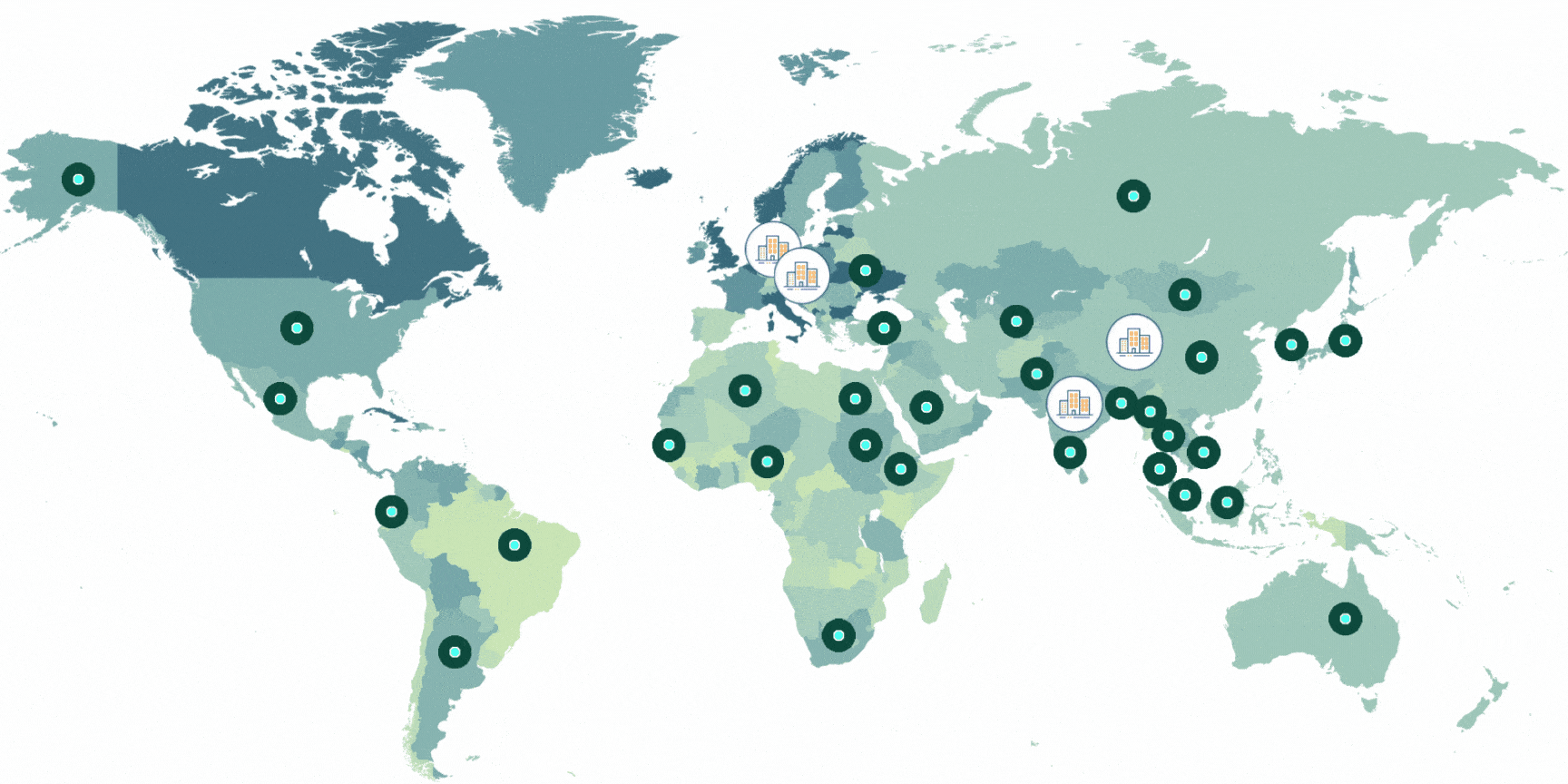1. Dynamic Pricing Based on Market Demand
Dynamic pricing, sometimes referred to as real-time pricing, is a strategic approach that enables wet wipes manufacturers to modify the prices of their goods in response to the prevailing market demand, rival pricing, and consumer behavior. This strategy utilizes sophisticated analytics and artificial intelligence (AI) to constantly monitor market circumstances and promptly modify prices in real time. By using dynamic pricing strategies, wet wipes manufacturers may effectively compete in a volatile market and optimize their profit margins.
Dynamic pricing has the advantage of promptly adapting to fluctuations in market demand. During moments of heightened demand, such as flu seasons or pandemics, prices might be escalated to mirror the jump in demand for hygienic items such as wet wipes. In contrast, prices may be reduced during periods of low demand to encourage purchases and eliminate excess stock. This adaptability guarantees that the company can maximize its earnings irrespective of market circumstances.
In addition, dynamic pricing entails the examination of competition price methods. Wet wipes manufacturers may maintain competitiveness and prevent price wars by monitoring and adapting their prices in response to their rivals’ pricing strategies. This pricing strategy guarantees that the company’s goods maintain their appeal to customers while yet maintaining profitable margins. Advanced algorithms can evaluate large quantities of data, allowing them to detect patterns and trends that human analysts may overlook. This may provide a considerable advantage in competition.
Customer behavior and purchase habits are essential factors in dynamic pricing. By comprehending how consumers engage with the product—such as identifying the periods when they are most inclined to make a purchase, their responsiveness to alterations in price, and their desired amounts for purchase—enterprises may customize their pricing strategies to align with consumer expectations and optimize sales. For instance, if the data suggests that consumers have a higher propensity to purchase wet wipes in big quantities during certain seasons of the year, pricing might be modified to provide enhanced value during these particular time frames, hence incentivizing greater transactions.
When adopting dynamic pricing, it is crucial to use advanced pricing software capable of managing the intricacies of real-time data analysis and decision-making. The program must have the ability to integrate diverse data sources, such as market trends, competition prices, and consumer data, to provide a holistic perspective that guides pricing choices. In addition, transparent and effective communication with clients about the rationales for pricing adjustments may contribute to upholding transparency and fostering confidence.
In summary, using dynamic pricing strategies that are influenced by market demand may be a very effective approach for wet wipes manufacturers seeking to optimize their profits. By using sophisticated data analysis and artificial intelligence, companies may adjust to changes in the market, maintain their competitiveness, and fulfill client demands, thereby guaranteeing long-term development and profitability.
2. Value-Based Pricing
Value-based pricing is a strategic approach that determines product prices based on the customer’s perceived value, rather than relying merely on production costs or market prices. This technique centers on comprehending and highlighting the distinctive advantages and characteristics of the product that clients are willing to pay a higher price for. Value-based pricing may be very successful in distinguishing wet wipes goods in a competitive market and increasing profitability.
An essential first step in adopting value-based pricing is to perform comprehensive market research to ascertain the specific attributes of the product that are highly appreciated by consumers. When it comes to wet wipes, some important factors to consider are the usage of hypoallergenic materials, environmentally friendly packaging, antibacterial qualities, and the ability to serve several purposes. Through the identification of these crucial factors that determine the worth of a product, firms may strategically present their offerings in a manner that emphasizes these advantages and justifies a higher price level.
After identifying the distinct advantages of wet wipes, it is essential to successfully convey them to the intended audience. This entails formulating marketing messaging that highlights how the product effectively caters to specific requirements or resolves specific issues more effectively than rivals. If the wet wipes are manufactured using biodegradable materials, marketing strategies should concentrate on highlighting the ecological advantages and targeting environmentally concerned customers who are prepared to spend more on sustainable goods.
Setting the price of the product according to its perceived worth ensures that the pricing is in line with what buyers are prepared to pay. This requires a comprehensive comprehension of the target market groups and their level of responsiveness to pricing changes. Surveys, focus groups, and customer feedback may provide significant data on consumers’ willingness to pay for the supplementary advantages provided by the product. By using this information, it becomes possible to segment the market and implement more accurate pricing plans that are specifically customized to particular client groups.
Furthermore, implementing value-based pricing allows wet wipes manufacturers to effectively capture a greater portion of the product’s actual value, leading to substantial increases in profit margins. For example, wet wipes of superior quality that have distinctive characteristics such as organic components or increased durability may have a higher price, attracting clients who value excellence and are less affected by fluctuations in price. Conversely, inexpensive wet wipes may be priced more affordably to appeal to clients who are sensitive to price, thereby guaranteeing that the product selection meets the varied demands of the market.
Adopting a value-based pricing model also encourages innovation and enhances product quality. In order to increase the perceived value of their goods, wet wipes manufacturers are motivated to constantly innovate and develop their offers. This not only aids in preserving a competitive advantage but also guarantees that the items retain their relevance and desirability to clients, thereby bolstering long-term profitability.
Ultimately, adopting a value-based pricing approach may be a very effective strategy for wet wipes manufacturers aiming to optimize their financial gains. Wet wipes manufacturers may distinguish themselves in the market, justify premium pricing, and achieve better profit margins by emphasizing the distinct value their goods provide to consumers and setting prices that line with customer views and willingness to pay. Adopting a pricing strategy that prioritizes the needs and preferences of customers not only increases profitability but also fosters greater customer loyalty and boosts brand reputation.
3. Bundling and Volume Discounts
Bundling and volume discounts are pricing methods that incentivize consumers to buy many goods simultaneously, resulting in higher sales volume and improved customer loyalty. These tactics are especially advantageous in the wet wipes market, where convenience and value play a crucial role in influencing purchase choices.
Bundling refers to the practice of combining many things into a single bundle and providing it at a discounted price compared to buying each item individually. For wet wipes, this might include amalgamating many categories of wipes, such as antibacterial, infant, and face wipes, into a unified package. This not only offers clients a wide selection and ease of use but also motivates them to sample various goods from your assortment. By providing a bundle, wet wipes manufacturers may acquaint clients with new or complementary goods they may not have otherwise explored, thus enhancing total sales and product visibility.
Volume discounts encourage consumers to purchase bigger quantities of a particular product by providing a lower price per unit when bought in bulk. For instance, providing a price reduction on a three-month stock of moist towelettes might attract clients seeking economical options and ease of use. This approach is especially efficient in focusing on families, childcare facilities, and other clients who often use our products and get advantages from purchasing in large quantities. Volume discounts facilitate the movement of bigger amounts of goods, leading to a reduction in storage expenses and assuring a consistent flow of income.
Both bundling and volume discounts provide an impression of enhanced value, instilling in clients the belief that they are receiving a greater amount of goods or services in exchange for their money. This view has the potential to greatly enhance sales and customer happiness. These techniques benefit wet wipes manufacturers by increasing sales volumes and enhancing client retention. Customers who make large-scale purchases or buy items as part of a package are more likely to make repeat purchases, which helps to cultivate long-term loyalty.
Moreover, these tactics may be customized to specifically focus on certain consumer categories. For example, clients seeking high-quality, specialized wet wipes may choose premium bundles, whilst price-sensitive customers might choose simple, cost-effective bundles. By tailoring packages and discounts according to client preferences and purchase behavior, firms may effectively target a broader customer base and optimize their market penetration.
By using bundling and volume discounts, there is a chance to engage in cross-selling and upselling. Wet wipes manufacturers may enhance the average order value by carefully combining goods that are complementary to one another. For instance, a package including wet wipes, antimicrobial gels, and portable containers might attract clients who are often on the go, motivating them to buy many things in a single transaction.
Furthermore, the efficiency of these packages and discounts may be further enhanced by advertising them via targeted marketing initiatives. Email newsletters, social media advertising, and in-store displays may effectively emphasize the advantages and cost savings linked to these deals, therefore increasing both footfall and sales conversions. Seasonal promotions and special events, such as the back-to-school period or holiday seasons, provide excellent opportunities to launch appealing packages and volume discounts.
To summarize, bundling and volume discounts are effective pricing tactics that may generate substantial sales growth and improve customer loyalty in the wet wipes business. Businesses may enhance purchase frequency, facilitate the movement of bigger inventory volumes, and cultivate enduring customer relationships by providing consumers with enhanced value and convenience. Adapting these methods to various client groups and advertising them with effectiveness may enhance their influence, resulting in consistent profitability and market triumph.
4. Subscription Models
Subscription models provide a continuous source of income by enabling clients to subscribe to receive regular product delivery, often at a reduced price compared to one-time purchases. This pricing method is especially efficient for wet wipes, a product that has continuous and recurring use in homes, healthcare institutions, and other environments. Adopting a subscription model may provide several advantages, both for the company and the consumer.
A key benefit of a subscription business is the consistent and predictable income it provides. Subscriptions provide a consistent stream of revenue, unlike one-time sales, which may assist with more precise financial planning and inventory management. The steady flow of income assists organizations in managing the uncertainties linked to unpredictable sales and empowers them to engage in expansion and innovation with assurance.
Subscription models provide clients with substantial convenience and value. Consistent delivery ensures that they do not have to be concerned about depleting their supply of necessary things such as wet wipes. Subscriptions may be tailored to suit individual requirements, whether it is a monthly provision or a quarterly replenishment. This convenience may greatly improve consumer satisfaction and loyalty by saving them time and effort when acquiring these essential items.
In order to enhance the appeal of the subscription model, wet wipes manufacturers have the option to provide unique privileges to customers. These benefits may include reduced membership fees, exclusive access to new items, or unique promotional offers. For example, a subscription service may provide a 10% reduction on each delivery in comparison to the regular one-time purchase cost, along with sporadic inclusion of a new product sample. These benefits enhance the worth of the subscription and increase its attractiveness to prospective clients.
Personalization is another crucial aspect of a successful subscription strategy. Enabling clients to customize their membership according to their requirements might boost their overall experience and level of satisfaction. For instance, a subscription for wet wipes may provide many choices for wipes such as those for babies, antibacterial purposes, and makeup removal. It could also provide varied volumes and delivery intervals. This adaptability guarantees that the subscription caters to the varied requirements of different consumer categories, ranging from households to enterprises.
Furthermore, subscription models provide a superb chance for wet wipes manufacturers to collect crucial client data. Through the analysis of subscription habits, preferences, and comments, firms may get valuable insights about customer behavior and preferences. This data may provide valuable insights for product development, marketing tactics, and inventory management, thereby ensuring that the organization stays in sync with client demands and industry trends.
Introducing a subscription model also fosters brand loyalty and minimizes consumer attrition. Customers are more inclined to remain loyal to a company they have confidence in and that regularly fulfills their requirements. By maintaining superior product quality and providing exceptional customer service, wet wipes manufacturers may establish enduring connections with their subscribers. In addition, the implementation of loyalty programs and referral incentives may effectively bolster customer retention and attract new clientele.
Efficiently promoting the subscription service is essential for its success. Wet wipes manufacturers can emphasize the simplicity, value, and unique advantages of subscribing using several channels, such as email marketing, social media, and in-store incentives. Effective communication that highlights the subscription’s ability to address consumer issues and improve their way of life may increase the number of people signing up and converting.
Ultimately, subscription models provide a profitable and consumer-oriented pricing structure for the wet wipes market. Wet wipes manufacturers may attract and maintain loyal consumers by providing ease, value, and personalization, which in turn guarantees a consistent flow of money. The data obtained from subscriptions may provide useful insights for ongoing enhancement and innovation. By implementing efficient marketing strategies and prioritizing customer happiness, subscription models have the potential to greatly increase profitability and establish a stronger market position.
5. Tiered Pricing for Different Customer Segments
Tiered pricing is a strategic approach that entails providing distinct price options for a product, which are determined by various degrees of features, quality, or consumer groups. This strategy enables wet wipes manufacturers to meet the varying demands of customers and optimize profits by extracting value from several market niches. Tiered pricing in the wet wipes business may be very beneficial as it allows wet wipes manufacturers to cater to both high-end and cost-conscious clients.
To begin a tiered pricing plan, the first step is to identify and comprehend the unique client categories present in the market. Potential target categories for wet wipes may include households with small children, healthcare institutions, environmentally concerned customers, and cost-sensitive shoppers. Each of these divisions has distinct priorities and levels of willingness to pay, which may be effectively managed via the use of tiered pricing.
For example, a top-tier category of wet wipes might be created specifically for affluent clients who place a high value on superior quality and extra functionalities. These wet wipes may have organic components, hypoallergenic characteristics, or improved durability. Wet wipes manufacturers may capture the value from consumers who are prepared to pay more for premium features by providing a better product at a higher price point. The marketing strategy for this tier should prioritize showcasing the distinctive advantages and exceptional quality of the product, targeting clients who actively seek the superior possibilities.
The mid-tier price level is designed to appeal to the ordinary customer who seeks a harmonious combination of quality and cost. These wet wipes may possess high-quality materials and advantageous characteristics, such as antibacterial capabilities or pleasant fragrances while being priced more reasonably. This tier targets the widest market sector, ensuring that the product stays affordable while also offering attractive features. An optimal marketing strategy for this tier should focus on highlighting the product’s value proposition and its core advantages.
The economy tier is designed to meet the needs of clients who are sensitive to price and are looking for lower-priced options. Despite having fewer features and simpler packaging, these wet wipes nonetheless adhere to important quality criteria. Wet wipes manufacturers may attract cost-conscious clients, such as big families or budget-conscious consumers, by providing a more cheap alternative. Marketing strategy targeting this tier should prioritize pricing and ensure the fulfillment of fundamental requirements while maintaining critical quality standards.
Tiered pricing enables organizations to develop customized marketing messages for each section. When promoting high-end items, it is important to emphasize their luxurious nature, exclusivity, and exceptional advantages. When it comes to mid-tier items, it is important to prioritize value, practicality, and balance. When it comes to economic items, the primary emphasis should be on their affordability, necessary advantages, and potential for cost reduction. By customizing communications for each group, firms can efficiently convey the unique benefits of each tier and appeal to the corresponding target demographics.
Furthermore, using tiered pricing might be advantageous when it comes to promoting upselling and cross-selling tactics. For instance, a consumer who first buys economy wipes might be enticed to experiment with the mid-tier or premium alternatives via well-planned promotional activities or product sampling. By providing bundles that consist of several tiers, it is possible to motivate clients to try out the advantages of higher-tier items, which might result in bigger sales in the future.
Implementing tiered pricing offers adaptability in addressing market fluctuations and client input. Wet wipes manufacturers can modify the characteristics and price of each level according to consumer preferences and market developments, guaranteeing that the product offers stay up-to-date and competitive. Consistently evaluating and optimizing the tiers using customer data and market insights helps maintain a robust market position and stimulate ongoing improvement.
Ultimately, implementing tiered pricing based on client categories proves to be a very effective approach for the wet wipes sector. Wet wipes manufacturers may effectively meet the diverse demands of customers, optimize revenue, and foster robust client connections by providing items with different price ranges and unique attributes. By customizing marketing messages and consistently improving the tiers depending on market input, the efficacy of this technique may be further enhanced, guaranteeing long-term profitability and success in the market.
6. Geographic Pricing
Geographic pricing is a pricing approach that involves setting various prices for things depending on the specific place in which they are sold. This strategy considers several aspects, including local economic circumstances, competitiveness, and consumer buying power. Geographic pricing is a useful approach for wet wipes manufacturers to enhance pricing strategies and maximize revenues across various locations.
Before introducing regional pricing, it is essential to carry out a comprehensive study of the intended markets. This entails comprehending the economic circumstances, mean income levels, and cost of living in each place. For instance, in affluent regions, consumers could be inclined to spend an extra amount for wet wipes that include exceptional characteristics, such as organic components or environmentally-friendly packaging. On the other hand, in places with lower incomes, it may be important to use a pricing strategy that is more cheap to attract customers who are sensitive to price. Wet wipes manufacturers may maintain the competitiveness and accessibility of their goods by adjusting pricing according to local economic circumstances.
A further crucial element in geographic pricing is examining regional competition. In areas characterized by intense rivalry, wet wipes manufacturers may be required to modify their pricing strategies to maintain their competitiveness. This might be providing promotional incentives, packaging items together, or incorporating additional features that set the product apart from rivals. In regions with less competition, there may be more leeway to sustain higher pricing and emphasize the distinctive advantages of the product. Gaining a comprehensive understanding of the competitive environment enables firms to strategically position their goods and seize a portion of the market.
Geographic pricing takes into account the important factor of consumer buying power. In areas where individuals possess higher levels of discretionary money, there is likely to be a stronger inclination to invest in high-quality goods and services. Wet wipes sold in these regions may have added attributes including antibacterial qualities, increased resilience, or specific formulas for delicate skin. Marketing tactics in these areas should focus on highlighting the exceptional quality and advantages of the product, hence justifying the higher price point. Conversely, in areas where people have less money to spend, focusing on price and necessary advantages might be effective in attracting budget-conscious clients.
Logistical and distribution expenses might also have an impact on geographic price. The expenses associated with transportation, storage, and distribution might vary considerably across various locales. Remote or rural places may have elevated transportation expenses, which might impact the ultimate price of the goods. By including these logistical costs in their calculations, firms may establish pricing that not only covers their expenditures but also stays appealing to consumers. In addition, forming partnerships with local distributors helps save expenses and optimize the supply chain, resulting in more competitive pricing.
Geographic pricing takes into account local restrictions and taxes. Regional disparities in tax rates, import levies, and regulatory requirements might influence the cost structure. For instance, increased tariffs on imports in certain nations may require raising pricing to sustain profitability. Remaining knowledgeable about local legislation and integrating these variables into pricing plans guarantees adherence and prevents unforeseen expenses that may diminish company margins.
Successful implementation of global pricing necessitates clear and open communication with consumers. Providing a clear explanation for pricing disparities, such as increased prices resulting from local economic circumstances or logistical difficulties, may contribute to the preservation of consumer trust and pleasure. Clear and open communication guarantees that clients comprehend the worth they are obtaining and the reasons for pricing variations in different places.
In order to enhance regional pricing, organizations should use data analytics and market intelligence. Using sophisticated analytics tools to track market trends, customer behavior, and competitor pricing in various locations may provide significant information for establishing the most effective rates. Frequently evaluating and modifying prices using up-to-date information guarantees that pricing tactics stay in line with market circumstances and client demands.
Geographic pricing is a strategic method that enables wet wipes producers to customize their price strategies according to the specific requirements of local markets. Wet wipes manufacturers may optimize profitability and competitiveness by taking into account several aspects, including economic circumstances, competition, buying power, logistical expenses, and local restrictions, when setting pricing. Efficient communication and decision-making based on data analysis further contribute to the success of regional pricing, guaranteeing that items stay appealing and easily obtainable to clients in various locations.
7. Limited-Time Promotions and Flash Sales
Time-limited promotions and flash sales are effective marketing tactics intended to generate a sense of urgency and enthusiasm among customers. By providing substantial discounts or exclusive promotions for a limited duration, wet wipes manufacturers may stimulate a sudden increase in sales and rapidly sell off their inventory. Within the wet wipes sector, using these strategies may provide significant results in terms of recruiting new clients, increasing immediate sales, and improving brand recognition.
The main advantage of limited-time promos and flash sales is the feeling of urgency they generate. Customers are more inclined to make a prompt purchase choice when they are aware that an appealing offer is only accessible for a short duration, to minimize the risk of losing out. This sense of urgency may greatly enhance conversion rates and generate bigger sales volumes within a limited time. An example of this would be a brief 48-hour promotion when all wet wipes are offered at a discounted price of 30%. This might result in a significant increase in sales as consumers hurry to make the most of the opportunity.
Furthermore, these deals provide a superb chance to showcase new goods or deplete existing stock. For instance, in the case of a wet wipes manufacturer introducing a fresh range of environmentally-friendly wet wipes, a temporary marketing campaign with a special initial markdown might effectively capture interest and motivate people to test out the novel product. Flash sales may also facilitate the clearance of outdated inventory, therefore optimizing storage capacity and allowing for the acquisition of fresh goods. This strategy not only increases revenue but also improves inventory management.
Temporary promotions and sudden discounts may also improve the acquisition and retention of customers. Wet wipes manufacturers may attract price-sensitive buyers who may not have considered the product at its usual price by providing substantial discounts. After clients get a firsthand experience of the superior quality and advantages of wet wipes, their likelihood of becoming loyal and recurring purchasers increases. Furthermore, current consumers are motivated to make supplementary purchases, so augmenting their entire lifetime value. By using email marketing, social media, and internet advertising, these offers may be effectively promoted to both new and loyal clients, ensuring their awareness of the bargains.
Marketing is essential for the success of limited-time promotions and flash sales. Efficient advertising entails crafting captivating and aesthetically pleasing commercials that emphasize the immediacy and worth of the offer. By using countdown clocks, attention-grabbing banners, and compelling call-to-action messaging, one may greatly enhance user engagement and boost conversion rates on websites. Social media platforms, email newsletters, and influencer collaborations are very effective avenues for rapidly and extensively disseminating information.
Seasonal and event-driven marketing has the potential to enhance the effectiveness of time-limited offers. By synchronizing flash sales with holidays, special celebrations, or significant shopping events such as Black Friday and Cyber Monday, it is possible to generate more attention and boost sales figures. For instance, a promotional campaign targeting parents who are getting ready for the school year might be effective by giving discounts on versatile wet wipes. These carefully planned promotions make use of the inherent rise in consumer spending during these specific times, to optimize sales opportunities.
Utilizing data analytics and consumer insights is crucial for maximizing limited-time promotions and flash sales. By examining historical promotion outcomes, client buying patterns, and market trends, organizations may develop more efficient promotional strategies. An example of this is gaining knowledge about the precise sorts of wet wipes that are in high demand throughout certain seasons. This information can be used to strategically plan and target future promotional activities. Moreover, monitoring the outcome of every campaign enables wet wipes manufacturers to enhance their tactics and enhance the efficiency of forthcoming promotions.
To summarize, time-limited promotions and flash discounts are very successful tactics for increasing immediate sales, drawing in new consumers, and reducing inventory in the wet wipes market. Wet wipes manufacturers may generate substantial increases in sales and improve brand recognition by using tactics such as generating a sense of urgency, providing appealing offers, and utilizing effective marketing strategies. By using data analytics to improve these promotions, we can guarantee that they continue to have a strong effect and are in line with current market trends, eventually leading to long-term growth and profitability.
8. Freemium Models
The freemium model is a widely used business approach that involves providing basic goods or services at no cost while offering more sophisticated features or premium versions for a charge. This strategy may be especially impactful in the wet wipes sector, enabling wet wipes manufacturers to appeal to a wide range of customers by offering complimentary samples or trial packs of their products. Wet wipes manufacturers may achieve substantial revenue growth by turning contented users into paying clients for premium editions or greater volumes.
An essential benefit of the freemium model is its capacity to reduce the obstacle for new consumers to get started. Providing complimentary wet wipe samples enables prospective clients to assess the product’s caliber and advantages without incurring any upfront expenses. This might be particularly compelling for consumers who are reluctant to experiment with unfamiliar brands or items. After experiencing and enjoying the free sample, customers are more inclined to buy the full-sized product or premium variations, resulting in higher sales and fostering customer loyalty.
To use the freemium model for wet wipes, one might provide free trial packs with a restricted quantity of wipes. These trial packs may be disseminated via several means, including online registrations, in-store promotions, or as components of a package with other items. The objective is to distribute the product to a wide range of prospective buyers, therefore enhancing brand recognition and promoting product testing. The free trial may also have a voucher or reduction code for the first purchase, so providing further motivation for clients to acquire the whole product.
In order to optimize the efficiency of the freemium model, it is crucial to establish a clear distinction between the complementary and high-end services. The premium variants of wet wipes should provide further benefits that justify the expense. Possible additions may include attributes such as allergen-resistant substances, environmentally-conscious packaging, increased volumes, or tailored wipes for specific purposes (e.g., infant wipes, cosmetic removal wipes, antimicrobial wipes). By emphasizing these improved characteristics, companies may convince clients that subscribing to the premium edition is a worthwhile investment.
The freemium model also offers a great potential for upselling and cross-selling. After clients are satisfied with the complimentary sample, firms may promote supplementary items or greater amounts to them. For example, a recipient of a free baby wipes sample may be inclined to buy a package that contains a range of wet wipes for various purposes or a subscription service that guarantees a constant supply of wipes. Customized marketing efforts that are tailored to the customer’s first encounter with the complimentary sample may greatly enhance conversion rates.
Data gathering and analysis are essential for the success of the freemium model. Through the process of monitoring consumer behavior and analyzing their purchase patterns, companies may get important insights into customer preferences and trends by keeping track of which customers are availing themselves of the free samples. This data may provide valuable insights for future marketing strategies, product development, and promotional campaigns. For instance, if the data indicates that clients who get the free sample are more inclined to buy environmentally friendly wipes, the wet wipes manufacturers might concentrate their efforts on advertising these items.
Furthermore, the freemium model aids in establishing trust and confidence with clients. By offering a complimentary trial of their wet wipes, companies showcase their unwavering belief in the superior quality of their product. The act of being transparent and offering value upfront has the potential to establish a favorable brand image and cultivate enduring customer connections. Contented clients are also more inclined to disseminate their favorable experiences with others, resulting in word-of-mouth recommendations and enlarging the customer base.
Efficient marketing is crucial for supporting the freemium model. Wet wipes manufacturers should use many channels, including social media, email marketing, and internet advertising, to effectively target a broad audience. Effective and persuasive communication that highlights the advantages of experimenting with the complimentary sample and the worth of the superior editions may enhance user interaction and increase the rate of successful actions. Collaborating with influencers or parenting blogs may be an effective strategy to connect with specific audiences and establish trustworthiness.
To summarize, the freemium model is an effective approach for the wet wipes market as it enables firms to acquire new clients, establish credibility, and increase their income. Wet wipes manufacturers may convert pleased users into paying customers by providing free samples and effectively distinguishing the premium versions. Utilizing data analysis and efficient marketing strategies may further improve the performance of this strategy, resulting in consistent profitability and development in the market.
9. Leveraging Data for Price Optimization
Utilizing data for price optimization entails employing sophisticated analytics to identify the most effective pricing methods that optimize revenue and profitability. Data-driven pricing choices may provide a substantial advantage in the wet wipes market, which is characterized by intense rivalry and frequently changing customer preferences. Wet wipes manufacturers may establish ideal prices that attract consumers and maintain profitable margins by examining many data sources, including market trends, consumer behavior, and rival pricing.
Utilizing data for pricing optimization offers a key advantage: the capacity to make well-informed selections grounded in up-to-the-minute market intelligence. Conventional pricing techniques often depend on fixed variables like manufacturing costs and past sales records. Nevertheless, with the emergence of big data analytics, wet wipes manufacturers now can take into account a wide range of ever-changing aspects. For example, information on seasonal demand patterns might assist organizations in modifying pricing during high-demand periods to optimize income. Prices may be reduced during periods of low demand and excess inventory to encourage sales and eliminate stock. This proactive strategy guarantees that pricing stays competitive and in sync with market realities.
Consumer behavior analysis is an essential element in the process of data-driven pricing optimization. Through the analysis of purchase patterns, firms may discern the factors that influence customer choices and determine the level of responsiveness to fluctuations in prices. For instance, statistics may indicate that consumers are inclined to pay a higher price for environmentally-friendly wet wipes, but are more concerned about the cost when it comes to basic types. This observation enables organizations to customize their pricing strategies appropriately. By providing high-quality merchandise at elevated pricing and offering more affordable rates for essential items, businesses may appeal to a wider client base, so optimizing total sales and profitability.
An essential aspect of price optimization is doing a thorough investigation of competitor pricing. Through the ongoing surveillance of rivals’ prices, organizations may adapt their pricing tactics to maintain competitiveness. Wet wipes manufacturers may use advanced analytics technologies to monitor rival pricing in real-time, enabling them to promptly adapt to market fluctuations. For example, if a rival initiates a promotional campaign or lowers its rates, a company might promptly modify its pricing strategy to maintain its market share. This proactive strategy guarantees that the organization maintains its competitiveness without resorting to harmful pricing battles.
Data analysis may be used to examine the price elasticity of demand, which is an important determinant. Gaining insight into the relationship between price fluctuations and consumer demand enables organizations to establish pricing strategies that optimize revenue while maintaining client loyalty. For instance, if data indicates that a marginal price rise has an insignificant impact on sales volumes, wet wipes manufacturers have the opportunity to raise prices to enhance income. On the other hand, if the data shows that consumers are very sensitive to pricing, wet wipes manufacturers may choose to prioritize keeping prices low to attract more customers and increase sales.
Utilizing advanced pricing software is crucial for efficient data-based price optimization. These technologies can combine many data sources, such as sales data, market trends, competition prices, and customer behavior, to provide thorough pricing insights. The program can execute intricate algorithms to simulate various pricing situations and forecast their influence on sales and profitability. Wet wipes manufacturers may use this opportunity to test several pricing methods and choose the one that produces the most favorable outcomes.
Furthermore, using data for price optimization allows for ongoing enhancement and fine-tuning of pricing tactics. Wet wipes manufacturers may adapt their tactics to align with evolving market circumstances and customer preferences by consistently evaluating pricing performance and assessing fresh data. This iterative strategy guarantees that pricing stays relevant and efficient in the long run. For example, when a new trend arises indicating a higher demand for travel-sized wet wipes, wet wipes manufacturers can modify the pricing of these items to take advantage of the trend.
Ensuring efficient communication and complete openness with clients about price changes is also crucial. By using data to support pricing changes, companies can effectively communicate to clients the rationale behind the value they are getting. For instance, in the event of price hikes resulting from elevated expenses for eco-friendly products, wet wipes manufacturers might inform environmentally aware clients about this, who may value the dedication to sustainability despite the extra cost.
To summarize, using data for price optimization is a very effective method for the wet wipes sector. Through the examination of market trends, customer behavior, rival pricing, and price elasticity, organizations may establish the most advantageous prices that optimize revenue and profitability. By incorporating sophisticated pricing software and consistently optimizing price strategies using up-to-date data, wet wipes manufacturers may maintain their competitiveness and adapt to changes in the market. Enhancing contact with consumers effectively contributes to the success of data-driven pricing optimization, resulting in long-term development and profitability.
10. Customer Feedback and Continuous Improvement
Customer input plays a crucial role in the ongoing enhancement of goods and services. Utilizing consumer feedback in the wet wipes sector may result in improved product quality, enhanced customer happiness, loyalty, and ultimately, higher profitability. Through proactive solicitation and thorough examination of feedback, organizations may discern opportunities for improvement, innovate with efficacy, and maintain a competitive edge.
To initiate continuous development via client feedback, it is essential to provide several avenues for gathering input. These may include polls, online reviews, interactions on social media platforms, and direct connections with customers. After a purchase, companies have the option to send follow-up emails with brief questionnaires to inquire about consumers’ experience with the wet wipes. These surveys aim to gather feedback on various aspects such as product quality, packaging, and recommendations for improvement. Promoting consumers to post reviews on e-commerce platforms and social media also yields significant information and contributes to the establishment of a public database of feedback.
Examining the gathered input is essential for identifying prevalent patterns and particular concerns. Advanced data analytics techniques may assist in consolidating and examining substantial amounts of input, therefore identifying reoccurring issues or popular characteristics. For instance, when many consumers express that wet wipes tend to lose moisture rapidly, it indicates a need to enhance the product’s ability to retain moisture. On the other hand, if buyers express admiration for environmentally conscious packaging, it suggests that this characteristic is highly regarded and should be highlighted in marketing campaigns. By comprehending these trends, organizations may prioritize enhancements that will have the most substantial influence on client happiness.
Integrating consumer input into the product development process promotes an innovative strategy that prioritizes the needs and preferences of customers. Wet wipes manufacturers may use input to steer adjustments to current items or the creation of novel ones. For instance, if feedback suggests a need for hypoallergenic wipes or wipes with certain fragrances, these preferences may be accommodated in the development of new product offerings. This kind of response not only fulfills client requirements but also shows the business’s appreciation for its customers’ viewpoints, enhancing customer loyalty.
Customer feedback may furthermore provide valuable insights into the whole customer experience, extending beyond the product itself. Feedback about the ease of locating and buying the product, the efficiency of customer support, and the comprehensibility of product information might identify opportunities for improvement in the customer experience. By attending to these wider facets, wet wipes manufacturers may optimize the total shopping experience, increasing the likelihood of client loyalty and positive word-of-mouth referrals.
The process of implementing changes based on consumer input should be clear and easily understood. Conveying these modifications to consumers demonstrates that their feedback is highly regarded and has a measurable influence. For instance, if a wet wipes manufacturer enhances its wet wipes in response to criticism about packaging, it may communicate these modifications via marketing campaigns, social media updates, and direct consumer interactions. This kind of openness fosters confidence and promotes continuous consumer involvement.
Iterative process refers to the continuous improvement that is driven by client input. Wet wipes manufacturers should consistently solicit fresh input, evaluate the efficacy of made modifications, and make more adjustments as necessary. This iterative process guarantees that the product and customer experience are continuously adapting to address growing consumer demands and market circumstances. After modifying the product’s moisture retention according to input, firms should closely observe fresh feedback to confirm the resolution of the problem and detect any emerging issues.
Furthermore, companies can use social listening technologies to track and analyze online discussions about their goods and brands, in addition to receiving direct feedback. Social listening entails monitoring and analyzing references, remarks, and conversations on social media platforms, forums, and review sites. Having a wider view enables wet wipes manufacturers to comprehend the general attitude and develop trends that may not be caught via direct feedback channels. For instance, if there is a growing popularity of environmentally-friendly goods, wet wipes manufacturers should take proactive measures to create and promote sustainable wet wipes to benefit from this trend.
Ultimately, it is crucial to cultivate a culture of ongoing improvement inside the company. It is important to promote the participation of employees at every level in generating ideas to improve goods and processes, using consumer feedback as a basis. Implementing regular training and development programs may enable personnel to remain responsive to consumer demands and up-to-date with new techniques. This shared dedication to enhancement guarantees that the organization maintains its ability to quickly adapt and respond to changes in the market.
Ultimately, the wet wipes sector relies heavily on user input and ongoing enhancements to ensure long-term profitability. Through proactive solicitation, thorough examination, and prompt response to feedback, organizations may optimize their goods, enhance the customer experience, and cultivate strong customer relationships. Implementing changes with transparency and promoting a culture of continuous improvement is crucial for maintaining competitiveness and customer attention in a changing market.











